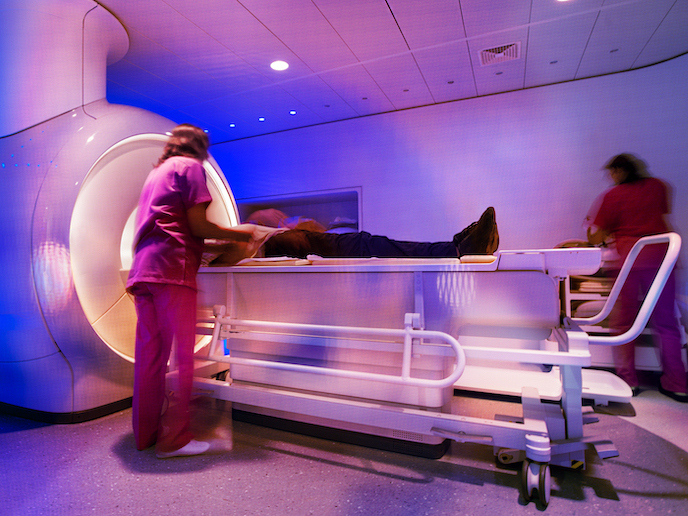Hyperpolarised MRI set to transform medical imaging
Advances in medical imaging techniques have allowed scientists and medical practitioners to see processes inside the body with extraordinary and increasing clarity. Non-invasive molecular imaging methods such as magnetic resonance imaging (MRI)(opens in new window) have gained widespread use in patient management of cancer, medical and life-sciences research, and drug discovery and development. “Many atoms in your body have a nuclear magnetic moment signature(opens in new window). In simple terms they act like a small bar magnet, and the MRI detects the magnetic field created by them. We cannot change the strength of these magnetic moments, but we can aim to arrange them all in parallel so that their fields add up,” explains Martin Plenio(opens in new window), director of the Institute of Theoretical Physics and Center for Quantum Bio-Sciences at Ulm University(opens in new window). The process for achieving this is called molecular hyperpolarisation. This can be incorporated into MRI to boost performance. However, the current methods for achieving hyperpolarisation are both costly and limited. The EU-funded HYPERDIAMOND project(opens in new window) is advancing hyperpolarised MRI technology by harnessing the quantum properties of colour centres in diamonds, using short laser pulses. HYPERDIAMOND created two novel platforms for hyperpolarisation – increasing effectiveness, reducing costs and considerably diversifying the potential applications of hyperpolarised imaging. Like MRI, hyperpolarised imaging systems have high spatial resolution, no harmful radiation, and a widespread availability in major hospitals and universities worldwide. Yet this imaging is extremely fast, with scans lasting only several minutes. “Hyperpolarised MRI is rapidly becoming one of the leading methods at the frontier of molecular imaging, especially for metabolic imaging, and has delivered unique insights into the characterisation and response of cancerous tumours,” says Plenio.
Novel platforms
The HYPERDIAMOND project team created the Diamond Hyperpolarizer(opens in new window), a cost- and time-effective hyperpolarised imaging solution. Current state-of-the-art systems require expensive superconducting magnets, yet these have been replaced by a low-cost system based on laser and microwaves. The system lets hyperpolarisation take place at room temperature within just 5 minutes, compared to the 60-90 minutes at 1 ° Kelvin(opens in new window) required in current systems. The Diamond Hyperpolarizer can be used to hyperpolarise metabolites, products of metabolic reactions within cells. This opens the door to metabolic profiling of individual patients, something which could drastically improve diagnosis and treatment of various diseases. The second development is the Nanodiamond Probe, the first MRI probe capable of achieving comparable molecular sensitivity to positron emission tomography(opens in new window) (PET) scans with MRI systems. The Nanodiamond Probe generates larger magnetic resonance signals due to the high density of carbon isotopes in diamonds, which improves the imaging capabilities. The combination of the two systems has the potential to yield up to a 1010-fold increase in the MRI signal.
Advanced applications
“The realisation of hyperpolarised MRI will have advantages that go well beyond a mere improvement in speed or accuracy because it will, for the first time, give access to the observation of metabolic processes via MRI in living tissue,” Plenio adds. This will allow for completely new ways in which to assess tumour stages and push the efficacy of chemotherapy to within days and not weeks or months. Project partner NVision Imaging Technologies(opens in new window) aims to develop the technology into a form suitable for operation in a hospital environment.







